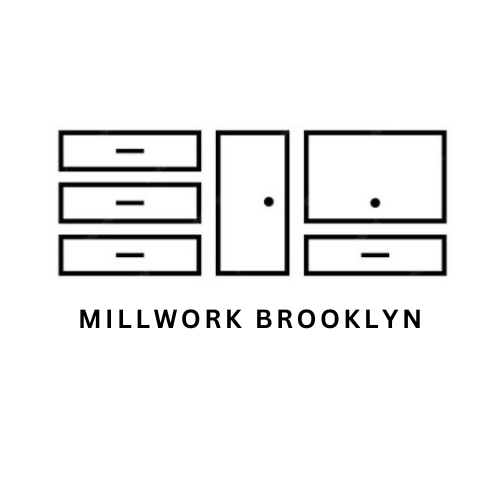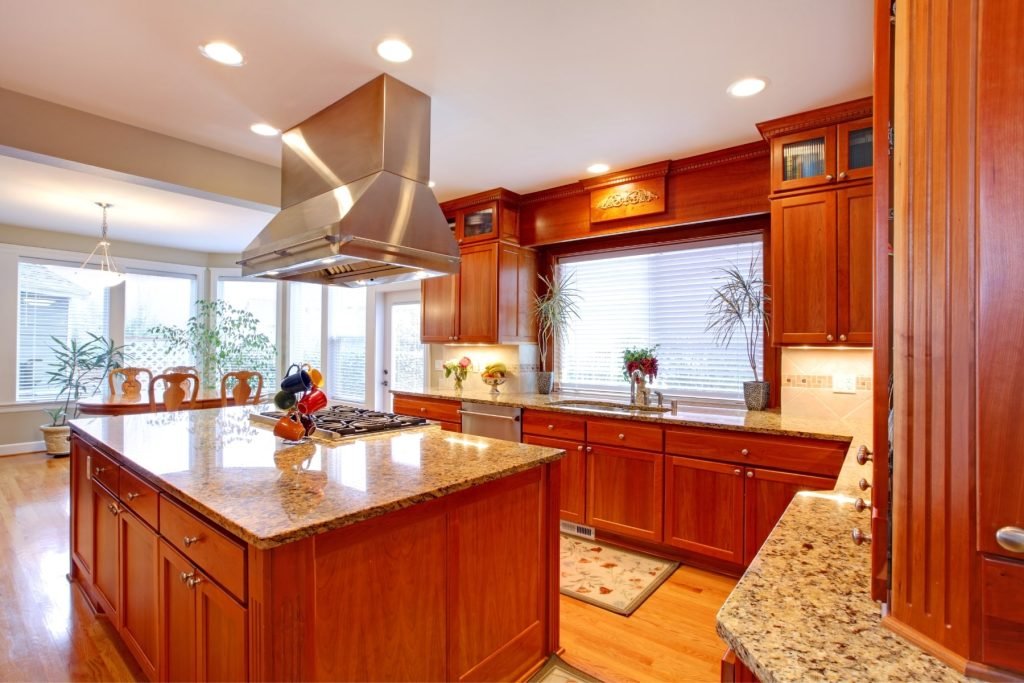Let’s be real—renovating in New York City isn’t for the faint of heart. Between contractors, permits, and the always-unpredictable bones of older Brooklyn homes, there are a lot of moving pieces. And when it comes to custom millwork, there’s often one big question hanging in the air:
“How much is this going to cost me?”
If you’re nodding along, you’re in good company. Almost every homeowner or designer we work with asks this at some point—and it’s a completely fair question. Understanding millwork pricing in Brooklyn isn’t just about numbers on a spreadsheet. It’s about knowing where your money is going, what affects the cost, and how to make choices that work for your space and your budget.
So, in this post, I’m breaking it all down for you—no fluff, no sticker shock, just an honest look at how to approach budgeting a renovation in NYC when custom millwork is involved.
What Exactly Is Custom Millwork?
Before we talk numbers, let’s quickly define what we’re working with.
Custom millwork includes:
- Kitchen cabinetry
- Built-ins (like bookcases, media centers, window seats)
- Trim, crown molding, paneling
- Vanities and bath storage
- Mudroom benches, closet systems, and more
Unlike store-bought options, custom millwork is designed for your home’s exact measurements, style, and needs. We’re not just installing cabinets—we’re building architectural elements that feel like they were meant to be there.
It’s one part design, one part fabrication, and one part installation—and each of those comes with its own price tag.
The Big Question: What Does Custom Millwork Cost in Brooklyn?
Let’s get into it.
While prices vary based on project scope, materials, and complexity, here’s a general sense of millwork pricing in Brooklyn as of 2025:
- Custom kitchen cabinets: $1,200 to $2,500+ per linear foot
- Built-in bookcases or media units: $800 to $1,800+ per linear foot
- Bathroom vanities: $2,500 to $6,000+
- Wall paneling or trim work: $20 to $45+ per square foot
- Closet systems/mudroom storage: $4,000 to $15,000+
Now, keep in mind: these ranges depend on your material choices (painted maple vs. walnut, for example), finish quality, hardware, design details, and installation complexity. A simple flat-panel cabinet in a straightforward layout will cost significantly less than an intricate, multi-material built-in with integrated lighting and curved millwork.
But here’s the thing: custom doesn’t have to mean outrageous. It just means tailored.
What Affects the Price?
If you’ve been gathering quotes and wondering why one bid is higher than another, here are the biggest factors that influence the cost of custom cabinets and other millwork:
1. Size and Scope
This one’s obvious: more square footage means more materials, more labor, and more cost. But even a small project can add up if there are a lot of custom features.
2. Material Choices
The species of wood you choose can swing the budget. Maple or birch (great for painted finishes) tend to be more affordable, while walnut, white oak, or exotic hardwoods command premium prices. Veneered plywood cores with hardwood edging offer a solid midrange option.
3. Finish Work
Painted finishes typically cost more than natural wood stains due to labor and prep work. Specialty finishes (like hand-rubbed oil or high-gloss lacquer) are even more labor-intensive—and pricier.
4. Hardware + Features
Soft-close drawers, integrated lighting, hidden outlets, pull-outs, appliance panels… every little add-on increases complexity (and cost). But they can seriously enhance functionality, so it’s worth weighing the investment.
5. Installation Conditions
Older Brooklyn homes can be tricky. Crooked walls, uneven floors, or tight access (hello, third-floor walk-ups) can require more on-site work and custom fitting, which adds labor time.
6. Design Complexity
Clean lines and slab doors? Easier and cheaper. Intricate molding profiles, curved elements, or multi-material builds? More time, more skill, more dollars.
Budgeting Tips (Without Cutting Corners)
We get it—you want the best, but you’ve also got a budget. Here’s how we help clients prioritize spending while still getting amazing results:
- Focus on high-impact areas first. For many people, that’s the kitchen or the living room built-ins. You can always phase in more work later.
- Choose quality over quantity. It’s better to have fewer well-built elements than to stretch your budget thin on a full overhaul with compromises everywhere.
- Opt for painted finishes if you love the look and want to save on premium wood species.
- Keep layouts efficient. U-shaped kitchens or full-wall media units with simple proportions are often more budget-friendly than broken-up or asymmetrical configurations.
- Reuse where possible. We’ve retrofitted existing cabinets, refinished woodwork, and repurposed built-ins when the bones were good—saving thousands.
And most importantly: talk to your millwork partner early. We can help shape a design that fits your goals and your budget from the start.
Millwork vs. Modular: Why Custom Costs More (And Why It’s Worth It)
At this point, you might be wondering: “Why not just buy something off the shelf and call it a day?”
Totally fair question. Here’s the difference:
- Custom millwork is built to your space, using higher-end materials, and designed to last decades. It’s handcrafted in local shops (like ours in Brooklyn), and every detail is intentional—from the joinery to the finishes.
- Modular cabinetry (think big-box or online brands) is often made with MDF or particleboard, mass-produced overseas, and built to standard sizes. It works—but it doesn’t fit.
If you want something that looks like it was always meant to be part of your home—not something you had to work around—custom is the way to go. And in many NYC homes, custom is the only way to make full use of every inch.
So yes, the cost of custom cabinets is higher upfront. But they’ll outlast and outperform their cheaper counterparts—and look better doing it.
Planning for the Unexpected
This is NYC, after all. One thing we always advise clients when budgeting a renovation in NYC is to build in a little wiggle room. Here’s why:
- Hidden conditions: You never know what’s behind the walls until demo begins. Water damage, old wiring, or out-of-level floors may need to be addressed before millwork can go in.
- Scope creep: Once you see how beautiful the kitchen looks, you might suddenly want matching cabinetry in the hallway. (It happens.)
- Schedule shifts: If another part of the reno gets delayed, it might affect install timing and storage costs for finished pieces.
We typically recommend setting aside 10–15% of your total millwork budget for unexpected expenses or design adjustments. You may not need it—but it’s always better to be prepared.
How to Work with Us (or Any Millwork Partner)
Whether you’re hiring us or someone else, here’s what a good custom millwork process should look like:
- Initial consultation – We talk about your space, inspiration, priorities, and budget.
- Preliminary estimate – Based on the conversation and rough dimensions.
- Design development – You’ll see layouts, materials, finishes, and hardware options.
- Final proposal + shop drawings – Once everything is approved, we finalize the price and schedule.
- Fabrication – We build in our shop, keeping you updated along the way.
- Installation – Our team installs everything on site, with precision and care.
Clear communication, realistic timelines, and transparent pricing are non-negotiables. You should feel involved and confident from start to finish.
Final Thoughts: A Smart Investment in Your Brooklyn Home
At the end of the day, custom millwork is an investment—not just in materials, but in how you live. It adds beauty, function, and value to your home. It solves problems that prefab can’t. And in a city where space is always at a premium, it helps you make the most of what you have.
Understanding millwork pricing in Brooklyn is the first step to planning a successful renovation. You don’t need an unlimited budget—you just need the right partner, clear priorities, and a process that respects your time and investment.
So, if you’re dreaming of built-ins that make your home feel truly yours, let’s talk. We’ll walk you through every option, give you honest pricing, and help you get the most out of your renovation budget—without sacrificing quality or character.

